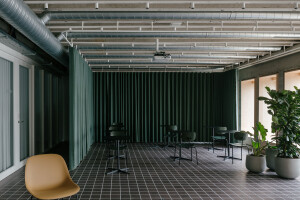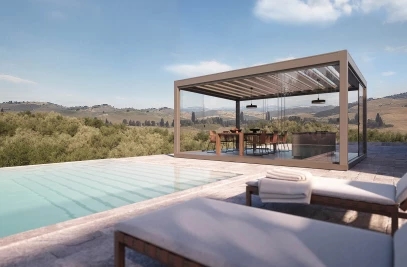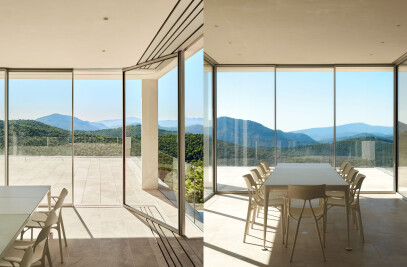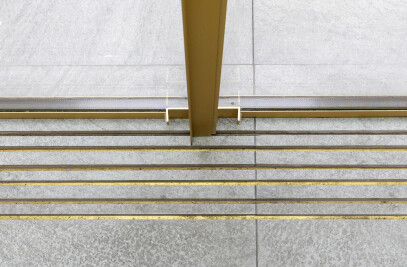Ceramic tile designs range from simple to complex, utilitarian to elegant. Available in an almost infinite number of colors, finishes, textures, and sizes, ceramic tiles are typically versatile and can be used throughout the home. With a highly durable finish, they are especially suited to those heavy-duty and frequently used areas, most notably kitchens, bathrooms, and hallways.
Ceramic tiles combine aesthetic and functional properties. They make an ideal architectural and design solution — for example, creating a continuous effect between floors and walls. Tiles can be used to cover expansive areas of the home (inside and outside), to create a feature wall or a visual accent point in a room, to demarcate a particular space, and to cover objects such as a kitchen island or table.
Ceramic is a heavy-duty, hard-wearing construction material and can be placed in a variety of environments without deteriorating. The material is also a highly effective insulator of heat and electricity. Ceramic tiles are waterproof and easily maintained. From the perspective of sustainability, an increasing number of ceramic tile makers are endeavoring to use materials that are locally sourced and/or recycled, as well as colorants that are either natural or obtained by natural means. Moreover, tiles can be made thinner in order to reduce the quantity of raw material that is used, thereby lessening the amount of transport that is required.
The projects featured here showcase a number of homes with decorative ceramic tile focal points.
The colorful patterned row of tiling in the kitchen of this home by Nautilo Arquitetura & Gerenciamento complements the interior’s furnishings. For example, the yellow in the paintwork and lavender in the sofa.
The wall tile is by Lurca.
2. Interiors of Villa in Olomouc
The classic black and white tile combination in the bathroom of this villa by Mimokolektiv is both elegant and functional. A clean, unbroken grid of tiles is used, with tiles “curving” on edges and corners.
The wall tile is by Studio Helder.
3. DGG House
In this fresh and breezy home renovation by Studiotamat, the kitchen’s hexagonal floor tiles provide a decorative motif that simply “pops”. The tiles work to clearly demarcate the kitchen from the adjacent living area.
The floor tile is by Stone.
4. Townhouse for a Millennial Couple

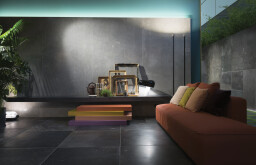
The simple black tiles in the covered courtyard entrance of this residence by Hintegro have the appearance of large stepping stones, bridging the outside with the home’s interior.
The all-over use of tiling in this Melbourne penthouse by Dita Studio is an appealing design feature. The classic monochrome effect provides a high-end interior finish.
The tiling is by G-Lux.


In this house designed by Chelsea Hing, a three-dimensional wallcovering creates a soft, contemporary backdrop. The tile, created by Spanish architect and designer Patricia Urquiola, can also be used as a way in which to add a decorative room partition.
7. 108ERA Renovation of a Farmhouse in Granera
In a century-old farmhouse renovation by Vallribera Arquitectes, the use of a colorful green tile in the bathroom is an unexpected feature in this otherwise traditional home.
In the bathroom of this home by B+P architetti, a patchwork of graphic tiles creates an intriguingly patterned floor, mixing a range of contemporary and traditional motifs.
The floor tile is by Ceramica Sant'Agostino.
9. House LLO
The extensive use of these rhomboid-like tiles in House LLO by OOIIO Architecture adds to, even magnifies, this staircase’s dramatic scale and height.
The wall tile is by Todobarro.
10. Glazed exterior
In this home by Circle Studio Architects, the glazed exterior tiling provides a clean backdrop in the outdoor space. The addition of the tiles works to create an indoor-outdoor living area.
The tile is by Academy Tiles.













